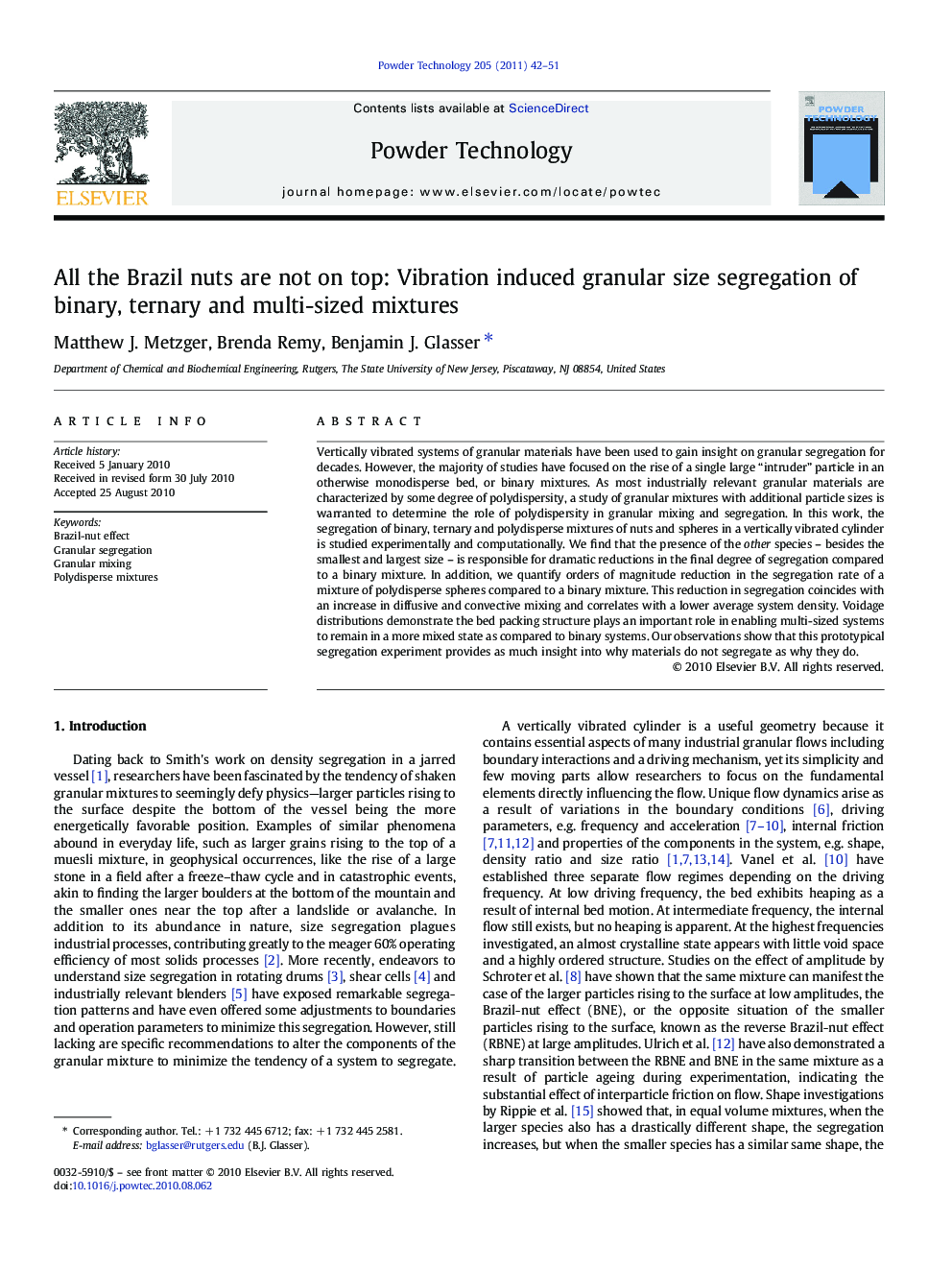| کد مقاله | کد نشریه | سال انتشار | مقاله انگلیسی | نسخه تمام متن |
|---|---|---|---|---|
| 238165 | 465745 | 2011 | 10 صفحه PDF | دانلود رایگان |

Vertically vibrated systems of granular materials have been used to gain insight on granular segregation for decades. However, the majority of studies have focused on the rise of a single large “intruder” particle in an otherwise monodisperse bed, or binary mixtures. As most industrially relevant granular materials are characterized by some degree of polydispersity, a study of granular mixtures with additional particle sizes is warranted to determine the role of polydispersity in granular mixing and segregation. In this work, the segregation of binary, ternary and polydisperse mixtures of nuts and spheres in a vertically vibrated cylinder is studied experimentally and computationally. We find that the presence of the other species – besides the smallest and largest size – is responsible for dramatic reductions in the final degree of segregation compared to a binary mixture. In addition, we quantify orders of magnitude reduction in the segregation rate of a mixture of polydisperse spheres compared to a binary mixture. This reduction in segregation coincides with an increase in diffusive and convective mixing and correlates with a lower average system density. Voidage distributions demonstrate the bed packing structure plays an important role in enabling multi-sized systems to remain in a more mixed state as compared to binary systems. Our observations show that this prototypical segregation experiment provides as much insight into why materials do not segregate as why they do.
Graphical AbstractGranular materials are well known for their tendency to segregate. Here we quantify orders of magnitude reduction in the segregation rate of ternary and multi-component mixtures by adding intermediate particle sizes to a binary mixture. Our observations show that this prototypical segregation experiment provides as much insight into why granular materials do not segregate as why they do.Figure optionsDownload as PowerPoint slide
Journal: Powder Technology - Volume 205, Issues 1–3, 10 January 2011, Pages 42–51